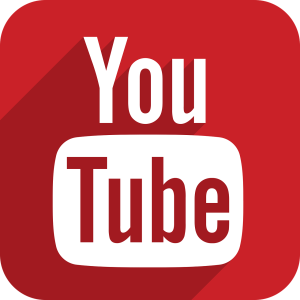Media Project leftovers
Mannn, there’s so much to share. I definitely wanted to include a million quotes and clips in my media project. I will put them all here for now so I can revise and improve my thoughts, my article, and my innovation when I feel less limited by deadlines and time limits.
Quotes with YouTube clips:
This relationship has the potential to guide students through the unfamiliar landscape, and the language of higher education can also equip them with the skills needed to make informed decisions and choices in life. Jim Ott (2016) passionately echos this opportunity by saying that “significant learning comes through relationship” (TEDx Talks, 2016, 12:18-12:20). These connections allow the navigation of experiences, emotions, and the many questions that arise.
Sir Ken Robinson (2010) explains that the 21st-century educational landscape has “an unprecedented demand for innovation, for fresh thinking, fresh social systems, fresh ways of getting people to connect with themselves and have lives with purpose and meaning” (RSA, 2010, 32:37-32:40).
Jon Stolk (2015) says, “choice, trust, acceptance, encouragement, dialogue, care; when students feel these things, there are extremely strong positive correlations to a bunch of the stuff we we say we care about. So things like peer learning and active help seeking this is engaging with others in the learning process. Learners finding more value in what they do. Self-efficacy, the sense that you can be successful. Intrinsic motivation. Creativity. Very high level cognitive engagement, metacognition, thinking about your own thinking process” (TEDx Talks, 2015, 15:17-15:50).
Jim Ott (2016) passionately explains, “so if we are truly interested in the future of our children we must give them significant learning. We must give them a sense that they matter. We must invest in the emotions of now because everything about what we care about, their future, depends on them developing a foundation of believing in themselves. That they have value that they have purpose. That they matter. That is significant learning” (TEDx Talks, 2016, 14:56-15:27)
Craig Mertler (2019) challenges us all “to think about some aspect of your life, that you would like to change. No matter how big or how small. It doesn’t matter if it is personal, professional, academic. It doesn’t matter because you own it. It’s about you and your life. Find a different way of doing this thing and try it out. Gather some evidence of how well it worked for you and then make a plan for where you go next. Is this the solution or do I need to keep looking. Do I need to keep finding better ways to improve?” (TEDx Talks, 2019, 9:43-10:17)
Sir Ken Robinson (2010) “people do their best when they do the thing they love. When they are in their Element” (RSA, 2010, 26:45-26:51).
Sir Ken Robinson (2010) “evidence is persuasive when people get to connect to this powerful sense of talent in themselves, discover what it is they can do, they become somebody else. And that […] me is the premise of building a new education system” (RSA, 2010, 27:03-27:15).
Through discussions and reflections, advisors guide learners through encouraging questions. Working with students to help them understand their why (TEDx Talks, 2019), connect with their goals, and reignite the inquisitive mind. Sugata Mitra (2013) poses that “encouragement seems to be the key […] simply saying wow, saluting learning” (TED, 2013, 13:58-14:10).
Harapnuik, D. (n.d.). CSLE. It’s About Learning. https://www.harapnuik.org/?page_id=849
Horn, M. B., & Staker, H. (2017). Blended: Using disruptive innovation to improve schools. John Wiley & Sons.
Khan, S. (2011, March). Let’s use video to reinvent education [Video]. TED Talks. https://www.ted.com/talks/salman_khan_let_s_use_video_to_reinvent_education?language=en#t-149503
RSA. (2010, February 4). Sir Ken Robinson – changing paradigms [Video]. YouTube. https://www.youtube.com/watch?v=mCbdS4hSa0s
Steele, G. E. (2016). Creating a flipped advising approach. NACADA Clearinghouse of Academic Advising Resources. Retrieved from https://nacada.ksu.edu/Resources/Clearinghouse/View-Articles/Creating-a-Flipped-Advising-Approach.aspx
TEDx Talks. (2009, September 29). Start with why — how great leaders inspire action | Simon Sinek | TEDxPugetSound [Video]. YouTube. Retrieved from https://www.youtube.com/watch?v=u4ZoJKF_VuA
TEDx Talks. (2016, March 14). Significant learning | Jim Ott | TEDxBellevueHighSchool [Video]. YouTube. https://www.youtube.com/watch?v=Zos6lhaehfo
TEDx Talks. (2019, March 20). Personal empowerment through reflection and learning | Dr. Craig Mertler | TEDxLakelandUniversity [Video]. YouTube. https://www.youtube.com/watch?v=uzDsT-25w14







